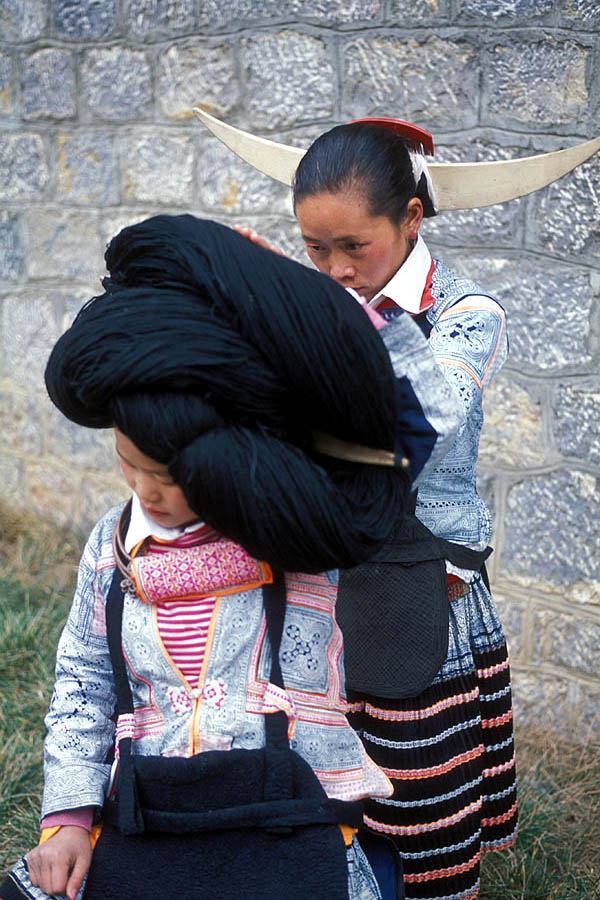|
Qiongzhong
Qiongzhong Li and Miao Autonomous County is an autonomous county in Hainan, China. It is one of 6 autonomous counties of the upper highlands of Hainan. Its postal code is 572900, and in 1999 its population was 196,581 people, largely made up of the Li people and the Miao people. Populated places *Yinggen Climate See also * List of administrative divisions of Hainan Hainan uses a slightly different administrative system from other administrative regions of China. Most other provinces are divided entirely into prefecture-level divisions, each of which is then divided entirely into county-level divisions, whi ... References * Official website External links * County-level divisions of Hainan Li autonomous counties Miao autonomous counties {{Hainan-geo-stub ... [...More Info...] [...Related Items...] OR: [Wikipedia] [Google] [Baidu] |
List Of Administrative Divisions Of Hainan
Hainan uses a slightly different administrative system from other administrative regions of China. Most other provinces are divided entirely into prefecture-level divisions, each of which is then divided entirely into county-level divisions, which generally do not come directly under the province. In Hainan, nearly all county-level divisions (the eight districts excepted) come directly under the province. This method of division is due to Hainan's relatively sparse population. However, it is planned that the counties and cities in Hainan (excluding Sansha) would be merged into five city-level cities, just like those on the mainland area of China. Administrative divisions All of these administrative divisions are explained in greater detail at Administrative divisions of the People's Republic of China. This chart lists only prefecture-level and county-level divisions of Hainan. Sansha oversees the South China Sea Islands: the Xisha (Paracel Islands), Zhongsha (Macclesfield Bank) ... [...More Info...] [...Related Items...] OR: [Wikipedia] [Google] [Baidu] |
Hainan
Hainan (, ; ) is the smallest and southernmost province of the People's Republic of China (PRC), consisting of various islands in the South China Sea. , the largest and most populous island in China,The island of Taiwan, which is slightly larger, is claimed but not controlled by the PRC. It is instead controlled by the Republic of China, a ''de facto'' separate country. makes up the vast majority (97%) of the province. The name means "south of the sea", reflecting the island's position south of the Qiongzhou Strait, which separates it from Leizhou Peninsula. The province has a land area of , of which Hainan the island is and the rest is over 200 islands scattered across three archipelagos: Zhongsha, Xisha and Nansha. It was part of Guangdong from 1950–88, after which it resumed as a top-tier entity and almost immediately made the largest Special Economic Zone by Deng Xiaoping as part of the then-ongoing Chinese economic reform program. Indigenous peoples like th ... [...More Info...] [...Related Items...] OR: [Wikipedia] [Google] [Baidu] |
Qiongzhong Li And Miao Autonomous County
Qiongzhong Li and Miao Autonomous County is an autonomous county in Hainan, China. It is one of 6 autonomous counties of the upper highlands of Hainan. Its postal code is 572900, and in 1999 its population was 196,581 people, largely made up of the Li people and the Miao people. Populated places *Yinggen Climate See also * List of administrative divisions of Hainan Hainan uses a slightly different administrative system from other administrative regions of China. Most other provinces are divided entirely into prefecture-level divisions, each of which is then divided entirely into county-level divisions, wh ... References * Official website External links * County-level divisions of Hainan Li autonomous counties Miao autonomous counties {{Hainan-geo-stub ... [...More Info...] [...Related Items...] OR: [Wikipedia] [Google] [Baidu] |
Yinggen
Yinggen () is a town and the seat of Qiongzhong Li and Miao Autonomous County in the centre of Hainan. , it had 5 residential communities () and 16 villages under its administration. The Baihuashan Waterfall is located nearby. See also * List of township-level divisions of Hainan This is a list of township-level divisions of the province of Hainan, People's Republic of China (PRC). After province, prefecture, and county-level divisions, township-level divisions constitute the formal fourth-level administrative divisions ... References Township-level divisions of Hainan Qiongzhong Li and Miao Autonomous County County seats in Hainan {{Hainan-geo-stub ... [...More Info...] [...Related Items...] OR: [Wikipedia] [Google] [Baidu] |
Miao People
The Miao are a group of linguistically-related peoples living in Southern China and Southeast Asia, who are recognized by the government of China as one of the 56 List of ethnic groups in China, official ethnic groups. The Miao live primarily in southern China's mountains, in the provinces of Guizhou, Yunnan, Sichuan, Hubei, Hunan, Guangxi, Guangdong, and Hainan. Some sub-groups of the Miao, most notably the Hmong people, have migrated out of China into Southeast Asia (Myanmar, Northern Vietnam, Laos, and Thailand). Following the History of Laos since 1945#Communist Laos, communist takeover of Laos in 1975, a large group of Hmong refugees resettled in several Western nations, mainly in the United States, France, and Australia. Miao is a Chinese language, Chinese term, while the component groups of people have their own autonyms, such as (with some variant spellings) Hmong people, Hmong, Hmu, Qo Xiong language, Xong (Qo-Xiong), and A-Hmao. These people (except those in Hainan) spea ... [...More Info...] [...Related Items...] OR: [Wikipedia] [Google] [Baidu] |
Autonomous Areas Of China
Chinese autonomous administrative divisions are associated with one or more ethnic minorities that are designated as autonomous within the People's Republic of China. These areas are recognized in the Constitution of the People's Republic of China and are nominally given a number of rights not accorded to other administrative divisions of China. For example, Tibetan minorities in autonomous regions are granted rights and support not given to the Han Chinese, such as fiscal and medical subsidies. Autonomous administrative divisions The PRC's autonomous administrative divisions may be found in the first (or top) to third levels of its national administrative divisions thus: Ethnic area Although not named as autonomous areas, some third-level settlements and areas that are identified as county-level cities and county-level districts enjoy the same autonomy as autonomous areas. At the fourth ("township") level, 1 ethnic sum (the Evenk Ethnic Sum) and over 270 ethnic townships a ... [...More Info...] [...Related Items...] OR: [Wikipedia] [Google] [Baidu] |
China
China, officially the People's Republic of China (PRC), is a country in East Asia. It is the world's most populous country, with a population exceeding 1.4 billion, slightly ahead of India. China spans the equivalent of five time zones and borders fourteen countries by land, the most of any country in the world, tied with Russia. Covering an area of approximately , it is the world's third largest country by total land area. The country consists of 22 provinces, five autonomous regions, four municipalities, and two Special Administrative Regions (Hong Kong and Macau). The national capital is Beijing, and the most populous city and financial center is Shanghai. Modern Chinese trace their origins to a cradle of civilization in the fertile basin of the Yellow River in the North China Plain. The semi-legendary Xia dynasty in the 21st century BCE and the well-attested Shang and Zhou dynasties developed a bureaucratic political system to serve hereditary monarchies, or dyna ... [...More Info...] [...Related Items...] OR: [Wikipedia] [Google] [Baidu] |
Provinces Of China
The provincial level administrative divisions () are the highest-level administrative divisions of China. There are 34 such divisions claimed by the People's Republic of China, classified as 23 provinces (), five autonomous regions, four municipalities and two special administrative regions. The political status of Taiwan Province along with a small fraction of Fujian Province remain in dispute; those are under separate rule by the Republic of China, which is usually referred to as "Taiwan". Every province on Mainland China (including the island province of Hainan) has a Chinese Communist Party (CCP) provincial committee (), headed by a secretary (). The Committee Secretary is effectively in charge of the province, rather than the governor of the provincial government. The same arrangement exists for the autonomous regions and municipalities. Types of provincial level divisions Province The government of each standard province () is nominally led by a provincial committe ... [...More Info...] [...Related Items...] OR: [Wikipedia] [Google] [Baidu] |
China Standard Time
The time in China follows a single standard time offset of UTC+08:00 (eight hours ahead of Coordinated Universal Time), even though the country spans almost five geographical time zones. The official national standard time is called ''Beijing Time'' (BJT, ) domestically and ''China Standard Time'' (CST) internationally. Daylight saving time has not been observed since 1991. China Standard Time (UTC+8) is consistent across Mainland China, Hong Kong, Macau, Taiwan, Philippines, Singapore, Brunei, Mongolia, etc. History In the 1870s, the Shanghai Xujiahui Observatory was constructed by a French Catholic missionary. In 1880s officials in Shanghai French Concession started to provide a time announcement service using the Shanghai Mean Solar Time provided by the aforementioned observatory for ships into and out of Shanghai. By the end of 19th century, the time standard provided by the observatory had been switched to GMT+08:00. The practice has spread to other coastal ports, and in ... [...More Info...] [...Related Items...] OR: [Wikipedia] [Google] [Baidu] |
Li People
The Hlai, also known as Li or Lizu, are a Kra–Dai-speaking ethnic group, one of the 56 ethnic groups officially recognized by the People's Republic of China. The vast majority live off the southern coast of China on Hainan Island, where they are the largest minority ethnic group. Divided into the five branches of the Qi (Gei), Ha, Run (Zwn), Sai (Tai, Jiamao) and Meifu (Moifau), the Hlai have their own distinctive culture and customs. Names 黎 (Lí), which was pronounced /lei/ in Middle Chinese is the Chinese transcription of their native name, which is Hlai. They are sometimes also known as the "Sai" or "Say". During China's Sui Dynasty, their ancestors were known by various names, including ''Lǐliáo'' (), a general term encompassing several non-Han ethnic groups in Southern China. The name Li first is recorded during the Later Tang period (923–937 CE). History Liang & Zhang (1996:18-21) believe that the original homeland of the Hlai languages was the Leizhou P ... [...More Info...] [...Related Items...] OR: [Wikipedia] [Google] [Baidu] |
Li Autonomous Counties
Li, li, or LI may refer to: Businesses and organizations * Landscape Institute, a British professional body for landscape architects * Leadership Institute, a non-profit organization located in Arlington, Virginia, US, that teaches "political technology." * Li Auto (Nasdaq: LI), a Chinese manufacturer of electric vehicles * Liberal International, a political federation for liberal parties * Linux International, an international non-profit organization * Lyndon Institute, an independent high school in the U.S. state of Vermont * The Light Infantry, a British Army infantry regiment Names * Li (surname), including: ** List of people with surname Li ** Li (surname 李), one of the most common surnames in the world ** Li (surname 黎), the 84th most common surname in China ** Li (surname 栗), the 249th most common surname in China ** Li (surname 利), the 299th most common surname in China ** Li (surname 厉), a Chinese surname ** Li (surname 郦), a Chinese surname ** Li (surname 理 ... [...More Info...] [...Related Items...] OR: [Wikipedia] [Google] [Baidu] |





